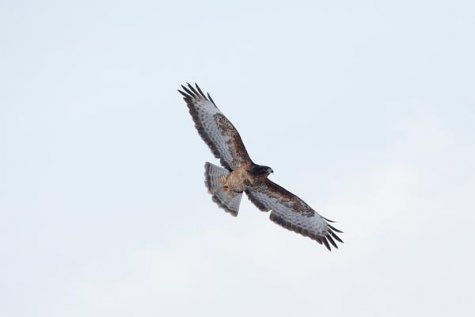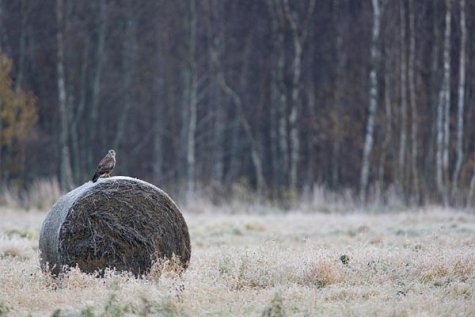About the quite common buzzard
Photos: Arne Ader
Translation: Liis
Buzzard
Common buzzard Hiireviu Buteo buteo
Broad wings, rounded tail – well, doesn’t it remind of a smallish eagle? Buzzards have smaller head and beak, and the wing primaries don’t have the “spread-out fingers” look of eagles. Body length is more than half a metre, wing span a few tens of centimetres over a metre. Females weigh more, or over a kilo, and the stronger sex stays at up to a kilo, but these measures and weights are just given to help make an estimate by eye.
In web camera view we have seen buzzards in action for several years and in nature they are our most noticeable birds of prey even in winter – when they are not noticed in flight then they are for instance sitting at roadsides so that it is difficult to miss the buzzard: on a power pole, a branch or a bale of hay, sometimes on the ground but then the bird may be there together with its prey.
The plumage is more complicated – in general with dark back feathers and the underparts are darkish too, but there are many colour variations and even ornithologists quarrel about them. In Arne’s photo the flight image is characteristic. In low-level flight 4-5 wingbeats are made, then wings are held slightly higher in a V position in gliding, and so the hunt for small rodents and water voles goes on. These make up the winter food, in addition passerines and gallinaceous birds when they can be had. Of course carrion is also looked for; if you don’t eat you won’t have any strength. This year even earthworms are still to be found and buzzards look for them.
Buzzard
The yellow legs of the buzzard can be seen from far off; the beak is bluish, with yellow cere. Eye colour can be yellow as well as brown.
Buzzard observations: LINK










